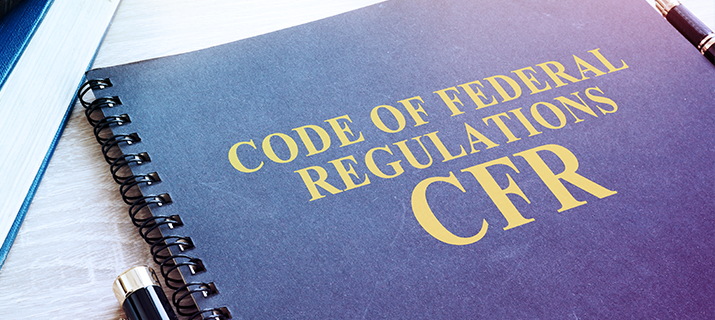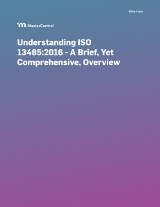
GxP Lifeline
Bringing ISO 13485 to 21 CFR Part 820

The expected alignment between ISO 13485 and 21 CFR Part 820 is showing progress as the U.S. Food and Drug Administration plans to update the Quality System Regulation (QSR) to the Quality Management System Regulation (QMSR). The FDA recently issued a proposed rule that would align Part 820 with the standard from the International Organization for Standardization (ISO). For years now, the agency has observed that ISO 13485 and Part 820 have a great deal in common and largely accomplish the same level of quality assurance.
However, that doesn’t make them the same. It’s important to note that being certified ISO 13485 compliant won’t automatically make an organization compliant with Part 820 and vice versa. Nonetheless, the FDA’s proposed changes would make it easier to be FDA compliant and ISO certified. For companies whose products are regulated by the FDA, but aren’t ISO certified, this change might be a bit more difficult.
Simplifying Quality Management Worldwide
Believe it or not, the FDA’s motivation here is to actually make things simpler. Rather than having companies comb through Part 820 for FDA compliance and then ISO 13485 for their ISO certification or international regulations, the FDA plans to reference ISO 13485 in applicable sections of Part 820. The agency sees this as a way to reduce redundancy and make compliance easier, especially for companies doing business globally.
“Although the requirements under the current part 820 are effective and very similar to those in ISO 13485, incorporating ISO 13485 by reference would further the Agency’s goals for regulatory simplicity and global harmonization and should reduce burdens on regulated industry,” the FDA noted. (1)
Harmonizing ISO 13485 and Part 820 in Practice
In their proposed rule, the FDA outlines differences between ISO 13485 and Part 820. TL;DR — the FDA lists most sections as having substantively similar requirements. The sections with differences include:
| 21 CFR Part 820 | ISO 13485 |
|---|---|
| Subpart D — Document Controls | Clause 4. Quality Management System |
| Subpart K — Labeling and Packaging Control | Clause 7. Product Realization |
| Subpart M — Records | Clause 4. Quality Management System |
| Subpart N — Servicing | Clause 7. Product Realization |
The agency explains more about the differences in their proposed rule. Even with these differences, much of Part 820 and ISO 13485 align and the FDA doesn’t anticipate this being a difficult transition for industry. That may be true in a sense. Day-to-day operations for a medical device manufacturer might not be dramatically impacted by the change. But the picture could be very different in the quality department.
Harmonizing ISO 13485 and Part 820 on Paper
Standard operating procedures (SOPs) are a frequent pain point for the quality department. And new language in legislation might mean updating a lot of those SOPs. The FDA has determined that most definitions from ISO 13485 are acceptable for their purposes, but there are some differences. And there are ISO terms that the FDA intends to use instead of its own.
One example of this is “device master record (DMR)” which will no longer be used in Part 820. Apparently, the FDA has decided that a DMR by any other name would be just as compliant. The FDA believes that the “medical device file” mentioned in ISO 13485 covers the concept of a DMR adequately.
Updating such terms in a medical device company’s SOPs isn’t going to be quite as simple as doing a find and replace in Microsoft Word. Documentation is key to passing any FDA inspection, so having everything up to date and in line with the new rule will be essential. Any time an SOP needs to be updated, redistributed, and trained on, the process is infinitely easier and simpler with a digital quality management system (QMS).
The QMS for the QMSR
A digital QMS is inherently paperless, so tracking down physical paper and comparing copies to try to determine the most recent version is a thing of the past. Medical device companies using a digital QMS will be better prepared to adapt to the QMSR. They’ll be able to easily find the SOPs they need and update them. More advanced systems can even be connected to a training management system, ensuring that everyone is trained on the new SOPs and the business remains completely compliant.
- “Medical Devices; Quality System Regulation Amendments,” U.S. Food and Drug Administration, Feb. 23, 2022.
Free Resource

Enjoying this blog? Learn More.
Understanding ISO 13485:2016 – A Brief, Yet Comprehensive, Overview
Download Now